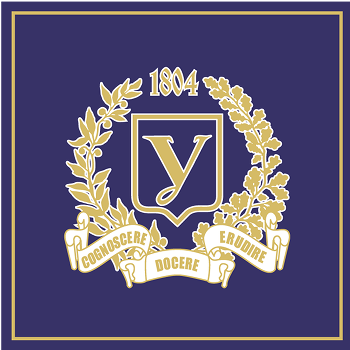Газетов Є. І.
- 2018-30
Study of Changes of Trophic Status of the Kuchurganske Reservoir in 2006-2018
Purpose. Assessment of the trophic status of water in the Kuchurganske Reservoir in 2006-2018. Methods. Determination of hydrological, hydrochemical and hydrobiological characteristics of the water body's environment has been done using standard methodologies. Four indicators of water eutrophication have been used: chlorophyll a concentration, bacterioplankton number, trophic indices TSI and TRIX. Results. Features of physicochemical characteristics of water in the water-body have been analysed. Higher water temperature has been registered in the middle and lower parts of the water-body compared with its upper reaches. Mineral content increase in water has been found in the direction from lower to upper part; the critical for hydrobionts life decrease of oxygen concentration has been registered in the upper reaches the most often. Analysis of long-term changes in chlorophyll a and bacterioplankton has been carried out. Statistical interconnections have been established between trophic state indicators and physicochemical characteristics of the reservoir. A close positive correlation has been registered between chlorophyll а content and bacterioplankton number, which is caused by the functional dependence of bacteria on the organic matter produced by phytoplankton. It has been shown that with an increase of water volume in the reservoir the value of these indicators of trophic status went down, which was proved by close negative correlation dependence between those values and the depth of water-body. It was demonstrated for the first time that water transparency revealed close significant negative correlation with all the indices and indicators of water trophic status, which evidenced the possibility to use the transparency as a simple indicator of water trophic state as the more transparent is the water the lower is trophicity and the higher is the quality of the aquatic environment. Conclusions. It was established that the Kuchurganske Reservoir’s trophic status assessment on chlorophyll a, bacterioplankton and the TSI trophic index practically coincided and evidenced the increase in trophic status of the water-body from eutrophic to hypertrophic in last 2016-2018. The reservoir’s upper reaches were characterized by higher water trophicity compared with the central and lower parts. The values of TRIX trophic index developed for marine water assessment had practically always been showing higher trophic status compared to other indicators.
Ключові слова:
- 2018-1-2-:29
Hydrological Studies of the Dniester Estuary in 2012-2017
Purpose. The study of the features of long-term changes of the Dniester Estuary hydrological regime main characteristics in 2012-2017 based on the results of annual surveys performed by Odessa National I. I. Mechnikov University. Methods. Measuring of the water transparency, temperature and electrical conductivity in the surface and near-bottom layers were carried out using standard techniques with Secchi disk and portable HACH analyser with temperature and conductivity sensors. Results. Based on the studies performed, almost two times decrease in water transparency values in summer of 2012-2017 has been established compared with the same period of 2003-2011. It was shown that the maximum transparency values were observed in the southern part of the estuary, where the presence of seawater is almost constant. Analysis of electrical conductivity spatial distribution has revealed practically constant influence effect of seawater intrusion in the southern part of the estuary, especially in the bottom layer, and periodical influence effect in the middle and northern parts. Significant increasing of the range of water temperature and electrical conductivity variations in the Dniester Estuary has been recorded in summer 2012-2017 comparison with summer 2003-2011. Conclusions. The established peculiarities of hydrological characteristics’ spatial distribution indicate that river discharge and intrusion of marine water are the most important factors determining the Dniester Estuary hydrological regime. Increase of temperature and conductivity of the Dniester Estuary water in summer 2012-2017 in comparison with 2003-2011 was registered. An anomalous penetration of marine waters into most part of the estuary was detected in July 2016, which in the past was observed for the last time in 2011.
- 2017-1-2-:27
Biological consequences of Kuyalnik estuary filling with marine water from Odessa
One of the main reasons for the necessity of our study was the fact that previous researchers used only model experiments on the impact of dilution of sulfuric mud on seawater and did not take into account in their conclusions the fundamental foundations of the functioning of ecosystems, such as the cyclicity of the salt and hydrological balance and the cyclic functioning of biocenosis in Ecosystem of the estuarine complex.Purpose. Revealing of real biological consequences of the Kuyalnik Estuary filling with big amounts of marine water in 2014-2016. Methods. Standard methods of hydrological, hydrochemical, hydrobiological and microbiological studies. Results. Based on the comprehensive studies the analysis of dynamics of the Kuyalnik Estuary ecosystem’s main physicochemical and hydrobiological characteristics has been performed, first of all of species composition, abundance and biomass of phytoplankton, bacterioplankton, zooplankton and concentrations of photosynthetic pigments. It has been shown that the studied biological characteristics have seasonal variations, the main reasons of which are changes in temperature and mineral content of the estuarine water, as well as the cases of gypsum sedimentation observed in summer of 2015 and 2016. Conclusions. Feeding of marine water did not achieve the expected result of stable estuarine water freshening, but worsened the situation with the unique biocoenosis. The current methodology of the estuary refilling with marine water causes negative consequences, which aggravate with each next feeding of marine water into the estuary and will accrue and entail the irreversible processes and complete degradation of the estuary’s ecosystem. We propose to focus on the restoration of the freshwater flow of the Big Kuyalnik River and the search for other engineering solutions.

